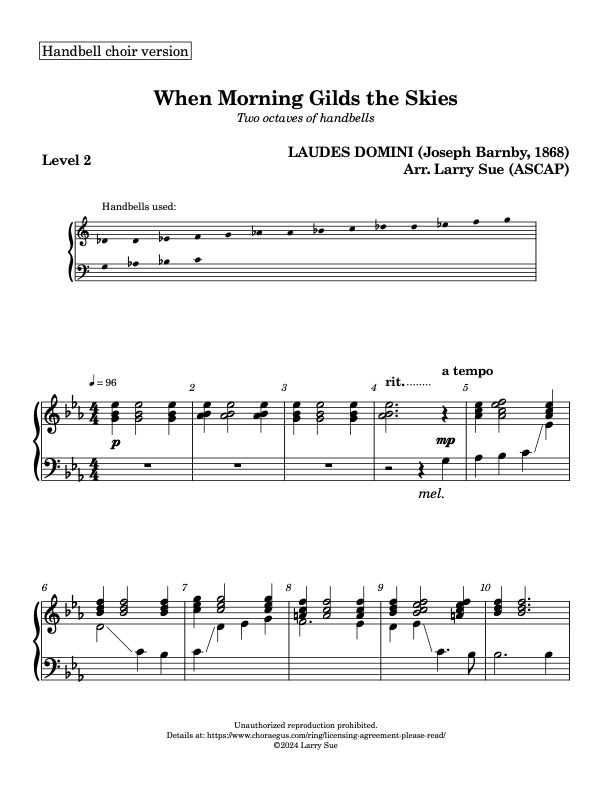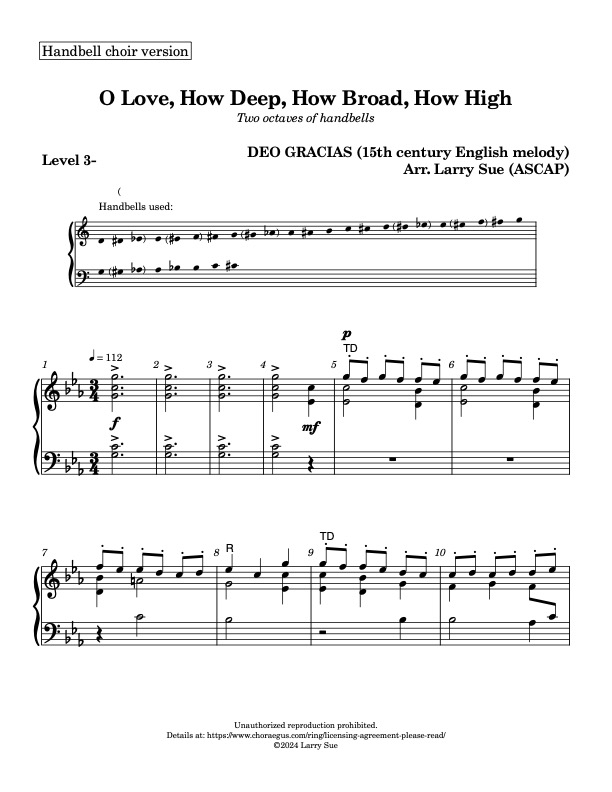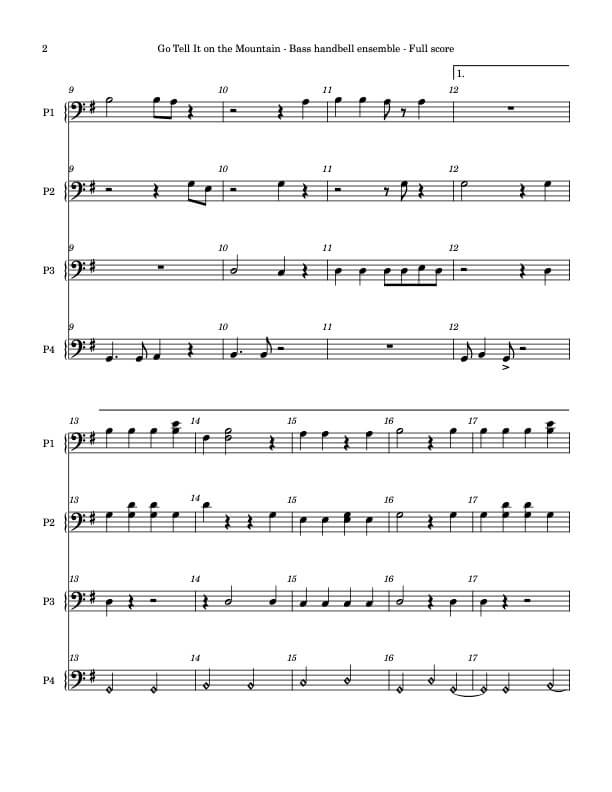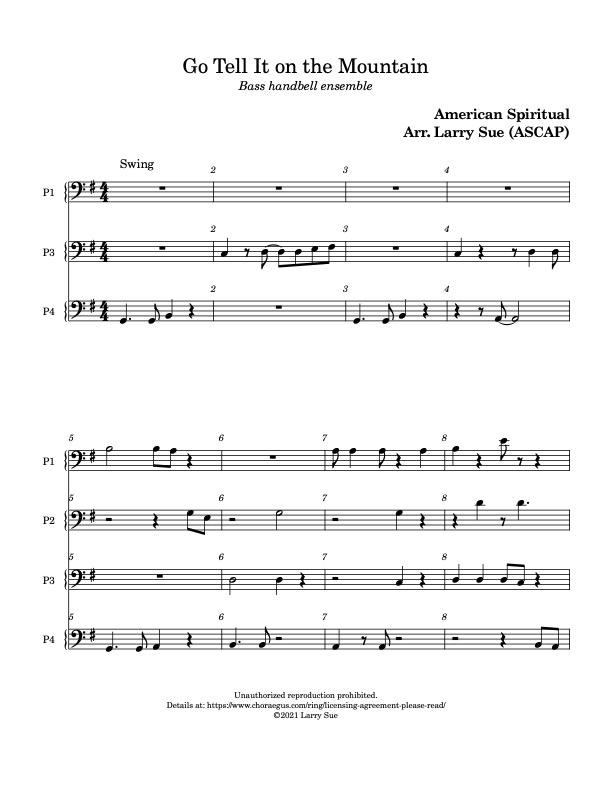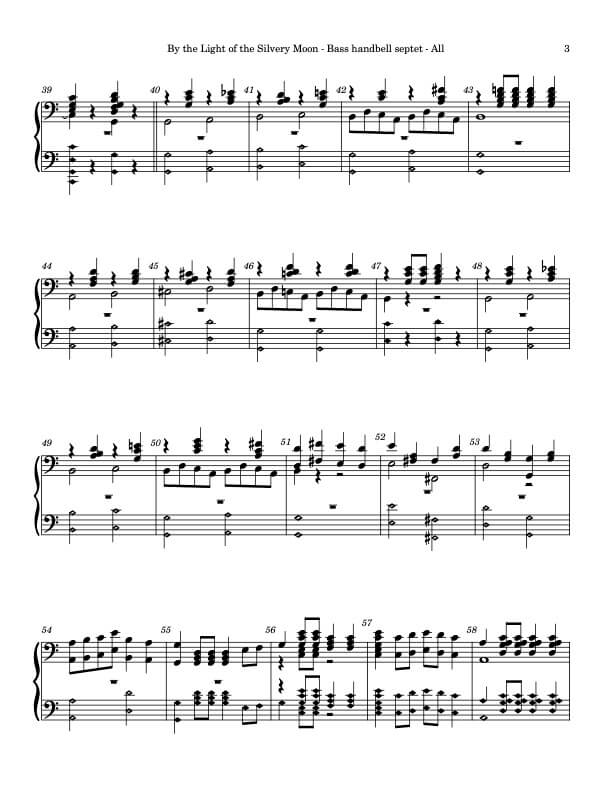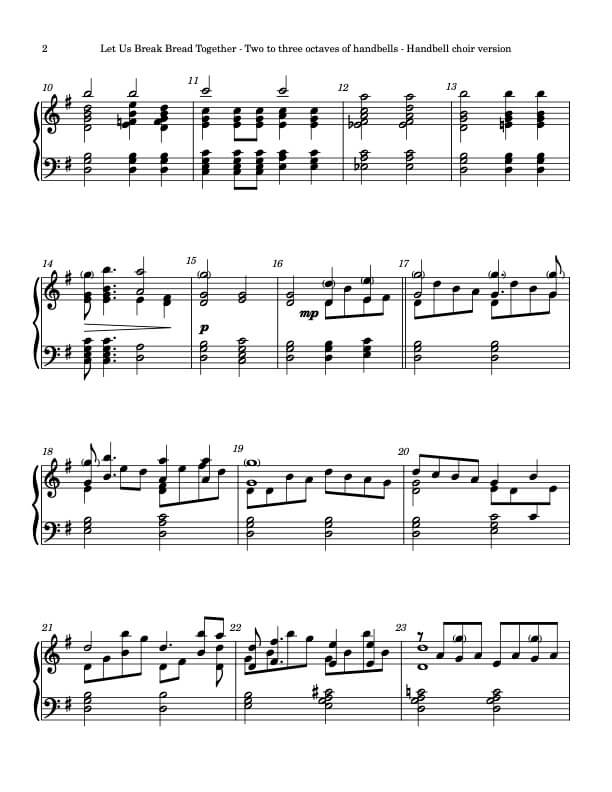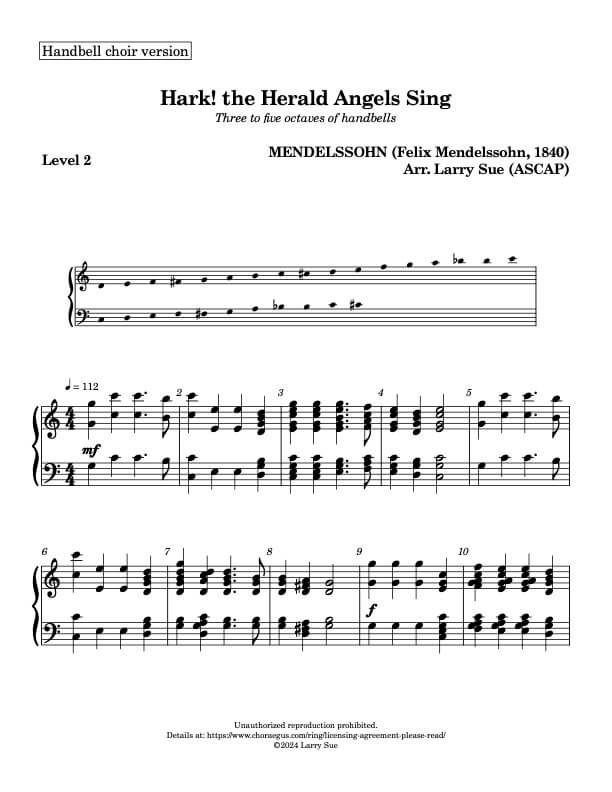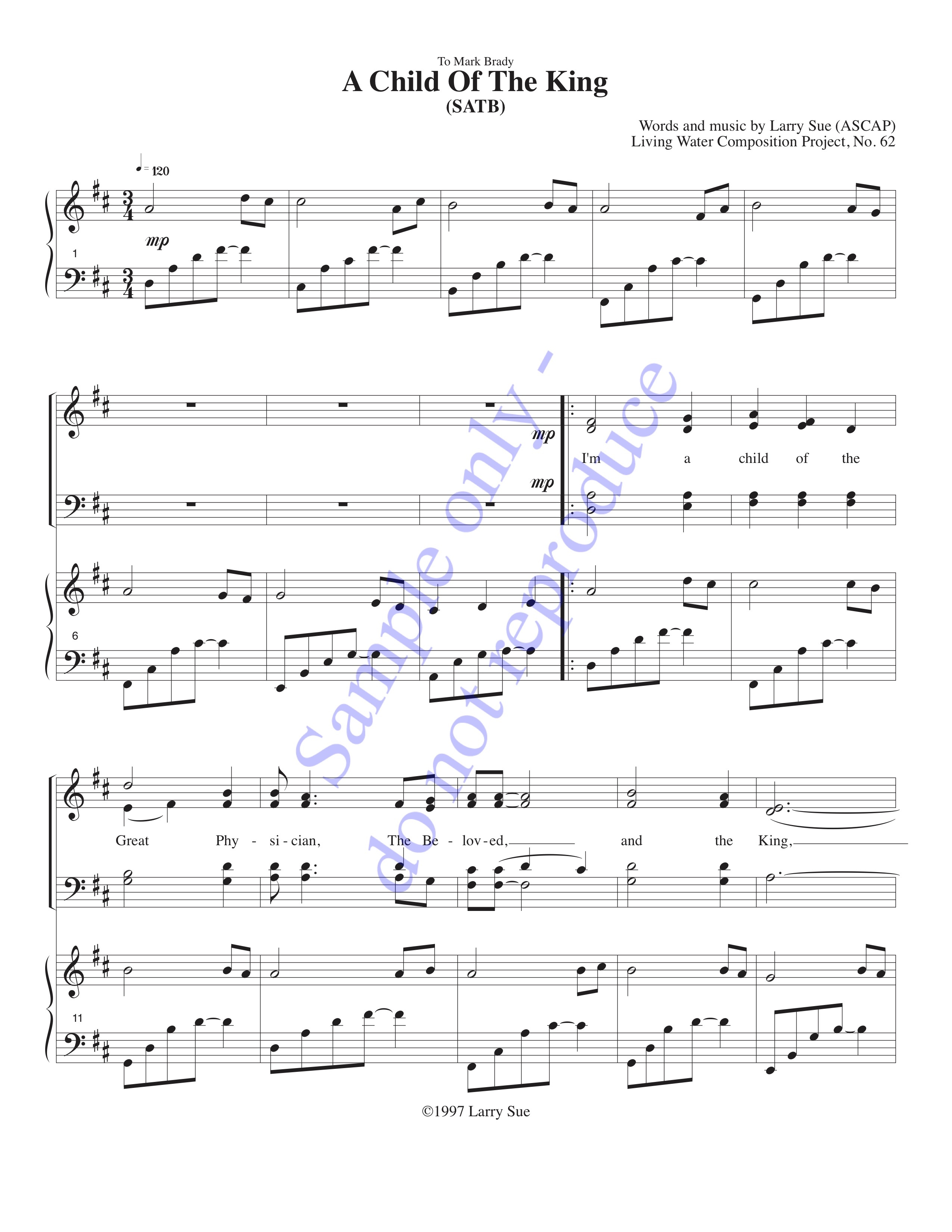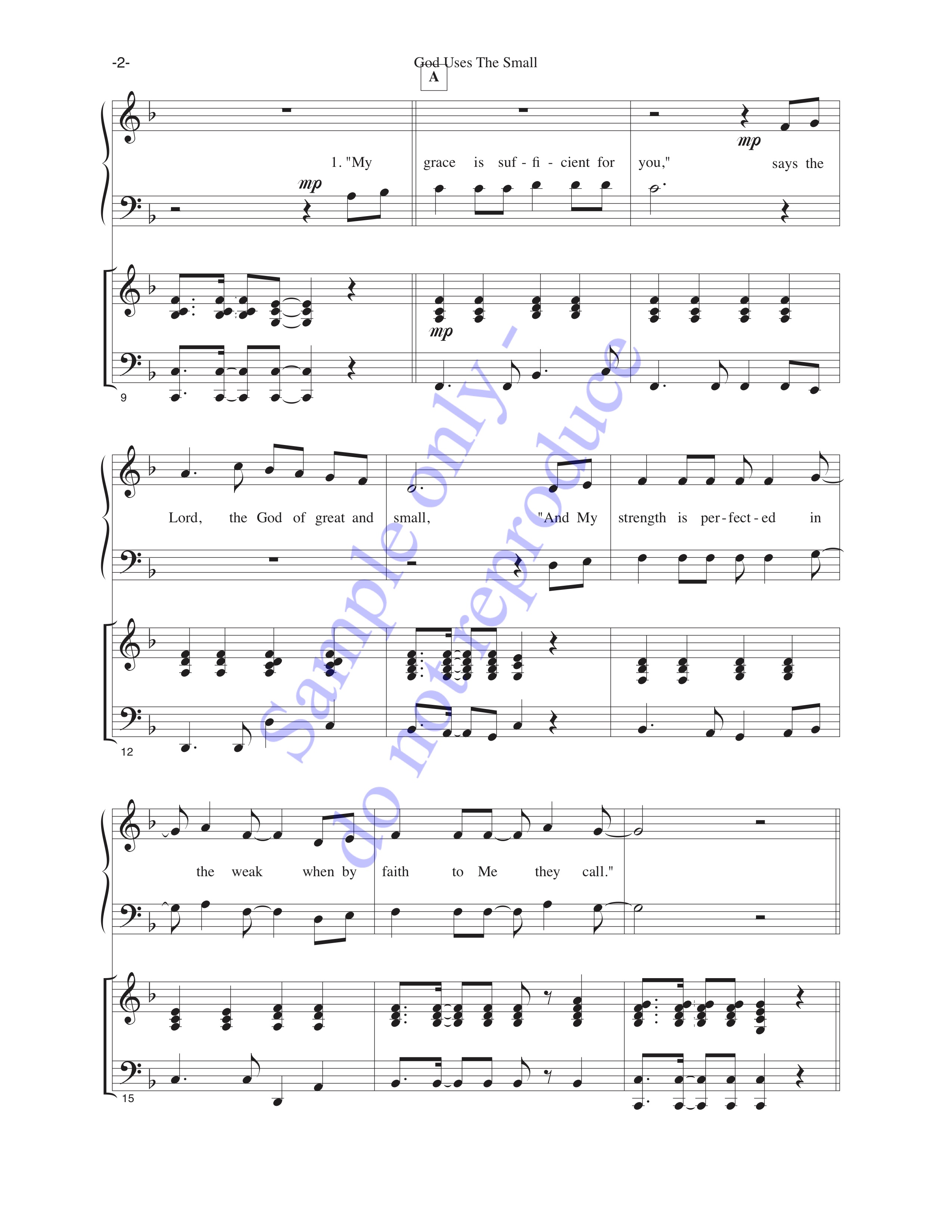At a Bay Bells (Cupertino, California) rehearsal in late 2005, I noticed that we had a team of five bass ringers that was really solid, and asked them, “What if we formed a bass handbell ensemble?” Everyone (Lisa, Kevin, Gretchen, Wil, and me) thought it would be a cool idea, so we put things together and got started. We later added JC to increase our complement to six (and to make our inaugural performance possible).
Our first problem to solve was acquisition of repertoire. Of course, none existed, so we had to create our own! Our first piece was “Spiritual Boogie”, which we prepared for the 2006 Area 12 conference in Belmont, CA. No one else had seen an all-bass handbell group before, and our presentation was a rousing success. I remember, rather foolishly, being so thrilled at how it went that I malleted my last note, and then threw my yellow-headed mallet 35 feet in the air (the chapel at Notre Dame de Namur University has a really, really high ceiling). Fortunately, the mallet went straight up, which also meant it returned to whence it came and didn’t hit anyone else on the way back. Yes, I caught it…
That performance was followed by other strange and wonderful scores, such as
- Nobody Knows the Trouble I’ve Seen, scored for four to seven bass ringers,
- Yes, We Have No Bananas, The Silver and Cohn hit (which, for some reason, has become a bit of a go-to source for a new arrangement from time to time). We performed it at a Cupertino Spring Ring, complete with Wil yelling “FASTER” for the last repeat, and Kendra sending a stretchy, screaming toy monkey flying into the audience at the end.
- The Outta My Way Blues, scored for eight bass ringers, four of whom play clarinet or other wind instrument. An honorable mention goes to the three treble ringers who augmented Low Ding Zone on this piece at Area 12 2008 in Riverside; they took on the name “High Ding Place” (if we’d had midrange ringers, they, of course, would have been “Battery Pack”).
- Dance of the Sugar Plum Sumo Fairy was featured in a Kalamazoo Ringers Christmas concert when COVID-19 made it dangerous or impossible to assemble in large groups, such as seven-octave handbell ensembles. So I wrote it as a trio for bells C2-G5, and we recorded it for the KR online/virtual concert. It turned out to be so wonderfully playable that we took only nine minutes to get a good take of the piece!
Low Ding Zone made its invasion into the handbell world for eight years (2005-2013), leaving a lot of bizarre chirocampanological debris in its path. Among that well-intended chaos:
- The term gurlie bell: Any bell that can be played as a Shelley secondary. So far, E3 is a gurlie bell, because I found an opportunity to suspended-mallet A2//E3 at the Redding handbell festival. Carol, of course was right there doing the same thing with the only-slightly-lighter C3//A4.
- The absolute conviction that four-in-hand/Shelley are normal with 4s. Our continuing hope to keep all of the notes at C5 and lower usually meant that we had members playing C4/G4 B4\G4 or D4/A4 C5\F4 (or something like that). This, incidentally, led to the occasional sight of my son playing in other groups and playing Eb3//Bb3, for instance. And yes, we also did the same with chimes.
- Lisa Arnold’s idea of creating a “human bell tree” to play Down to the River to Pray. That was achieved with six of us holding bells while the other two members malleted them.
- The unique experience of playing Royal Eijsbouts Bellplates for a season. These, essentially, were slabs of brass that weighed between fourteen (C4) and twenty-seven (C3) pounds, suspended on individual racks, and struck with heavy mallets. They were a lot of fun, but the trick with so much metal was not striking, but damping them.
- Transporting tons of stuff. Well, not really; the closest we got was about 1100 pounds of equipment for two concerts. You can imagine the wear and tear on our cars.
- Watching, with amusement, how people tried to figure out which syllables in our group name were stressed. Some said “loading zone”, and others said “low DING zone”. Oh, and the time I asked JP Vainio to explain “Low Ding Zone” – which involves a cultural reference, an idiom, and a pun – to Seppo Kirkinen… he did so in Finnish, which took quite a few minutes. I’m fairly certain that there might be other people who considered some of what a did untranslatable.
Yes… there were other arrangements as well, and many of them are here. There also have been opportunities to create and execute (pun intended?) other scores under the Low Ding Zone moniker as well, and they’re all fun. Well, at least for bass ringers. Like our group motto stated, “Impossible is only the beginning.” Enjoy.


